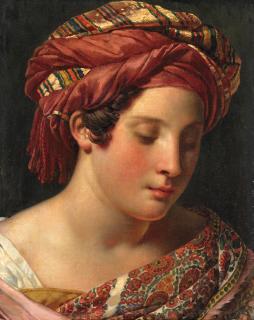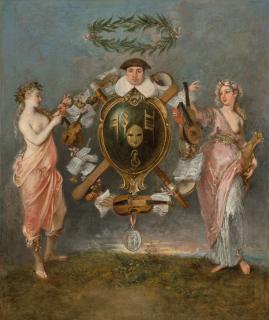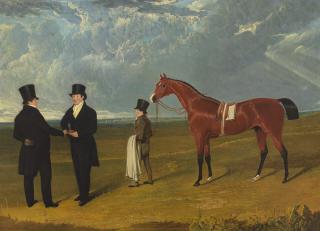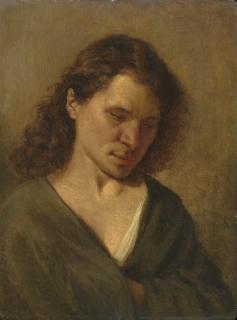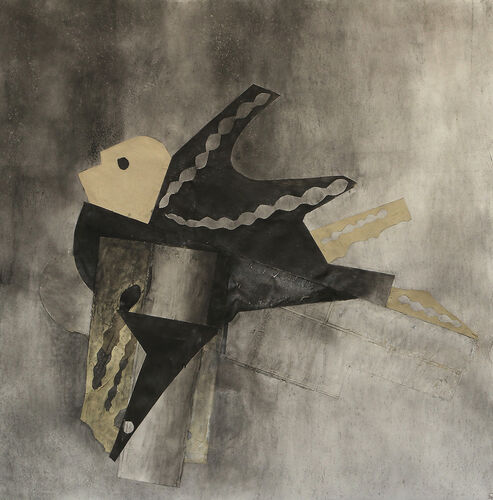- Art.Salon
- Artists
- Anne-Louis Girodet-Trioson
- L'Odalisque
Anne-Louis Girodet-Trioson
L'Odalisque
Estimate: 80.000 - 120.000 EUR
Price realised: 378.000 EUR
Price realised: 378.000 EUR
Description
ANNE-LOUIS GIRODET-TRIOSON (1767-1824), THE ODALISQUE, OIL ON CANVAS
This portrait of a young girl with luxurious dark curls was gifted by artist to the ancestors of the current owners, and is being offered at auction for the first time since its conception.
The richness of Girodet's art (1767-1824) sets him apart from the somewhat narrow classifications of his time. Artists of the 1800s were sometimes arbitrarily divided between a triumphant neoclassicism and a nascent romanticism. It is certainly true that Girodet owed a debt to Neoclassicism, first and foremost to his master David (1748-1825), who took him into his studio in 1785. David’s influence is tangible in the younger artist’s opaline, pearly palette, which can be seen in both his ambitious historical compositions and his intimate portraits of women. Coupin (1780-1841) reported - slightly sarcastically - that 'every day, before entering his dressing room, [Girodet] went to prepare his palette in front of the Horatii' (P. A. Coupin, Oeuvres posthumes de Girodet-Trioson, peintre d'histoire; suivies de sa correspondance; précédées d'une notice historique et mises en ordre, 1829, 1, p. IV).
But the artists trained by David, far from moulding themselves into a single model, all retained a very strong individuality, perhaps exacerbated by their rivalry with one another. Gros, Fabre, Isabey, Girodet and others each took a singular direction, and of all of them, Girodet certainly produced the most original compositions. In comparison with his daring compositions tinged with eroticism - in this respect very different from the more heroic Davidian paintings - such as his Sleep of Endymion (1791, Musée du Louvre, Paris, inv. no. 4935), his portraiture is marked by a sensitive intimacy. The great personalities of his day posed for the artist, including Chateaubriand (1808, Musée d'Histoire de la Ville et du Pays Malouin, Saint-Malo, inv. no. 1950.11.1) and Queen Hortense (c. 1809, Rijksmuseum, Amsterdam, inv. no. SK-A-4943).
In the 1820s, he produced a number of portraits of women wearing exoticising turbans known as Caucasians or Odalisques that had an atemporal appeal reminiscent of the Sybils by Domenichino (1581-1641) and Guido Reni’s (1575-1642) depictions of the Virgin. Sylvain Bellanger (op. cit., p. 397) believes that the model of our delicate Odalisque also posed wearing in a blue turban (Tête de femme au turban bleu, private collection) and Girodet re-uses this same striped turban in a painting kept at the Hermitage (La Caucasienne, Hermitage Museum, St Petersburg, inv. no. ГЭ-8235). The existence of two different prints after the present painting suggests that Girodet was very pleased with his timeless composition, as well as desirous to train his student engravers in his refined drawing style.
This portrait of a young girl with luxurious dark curls was gifted by artist to the ancestors of the current owners, and is being offered at auction for the first time since its conception.
The richness of Girodet's art (1767-1824) sets him apart from the somewhat narrow classifications of his time. Artists of the 1800s were sometimes arbitrarily divided between a triumphant neoclassicism and a nascent romanticism. It is certainly true that Girodet owed a debt to Neoclassicism, first and foremost to his master David (1748-1825), who took him into his studio in 1785. David’s influence is tangible in the younger artist’s opaline, pearly palette, which can be seen in both his ambitious historical compositions and his intimate portraits of women. Coupin (1780-1841) reported - slightly sarcastically - that 'every day, before entering his dressing room, [Girodet] went to prepare his palette in front of the Horatii' (P. A. Coupin, Oeuvres posthumes de Girodet-Trioson, peintre d'histoire; suivies de sa correspondance; précédées d'une notice historique et mises en ordre, 1829, 1, p. IV).
But the artists trained by David, far from moulding themselves into a single model, all retained a very strong individuality, perhaps exacerbated by their rivalry with one another. Gros, Fabre, Isabey, Girodet and others each took a singular direction, and of all of them, Girodet certainly produced the most original compositions. In comparison with his daring compositions tinged with eroticism - in this respect very different from the more heroic Davidian paintings - such as his Sleep of Endymion (1791, Musée du Louvre, Paris, inv. no. 4935), his portraiture is marked by a sensitive intimacy. The great personalities of his day posed for the artist, including Chateaubriand (1808, Musée d'Histoire de la Ville et du Pays Malouin, Saint-Malo, inv. no. 1950.11.1) and Queen Hortense (c. 1809, Rijksmuseum, Amsterdam, inv. no. SK-A-4943).
In the 1820s, he produced a number of portraits of women wearing exoticising turbans known as Caucasians or Odalisques that had an atemporal appeal reminiscent of the Sybils by Domenichino (1581-1641) and Guido Reni’s (1575-1642) depictions of the Virgin. Sylvain Bellanger (op. cit., p. 397) believes that the model of our delicate Odalisque also posed wearing in a blue turban (Tête de femme au turban bleu, private collection) and Girodet re-uses this same striped turban in a painting kept at the Hermitage (La Caucasienne, Hermitage Museum, St Petersburg, inv. no. ГЭ-8235). The existence of two different prints after the present painting suggests that Girodet was very pleased with his timeless composition, as well as desirous to train his student engravers in his refined drawing style.



